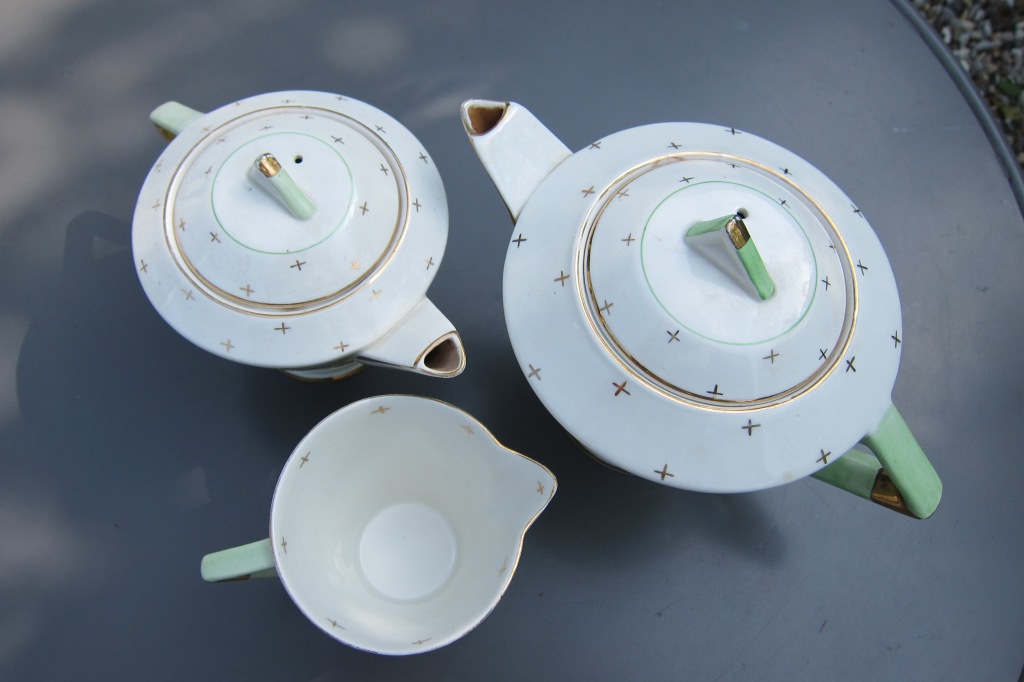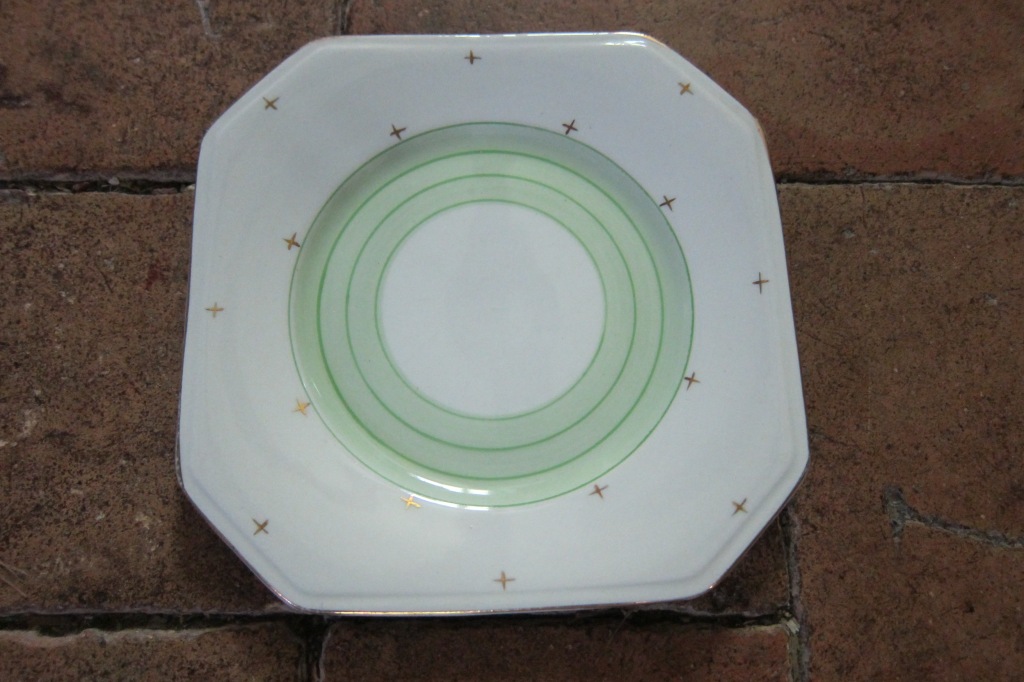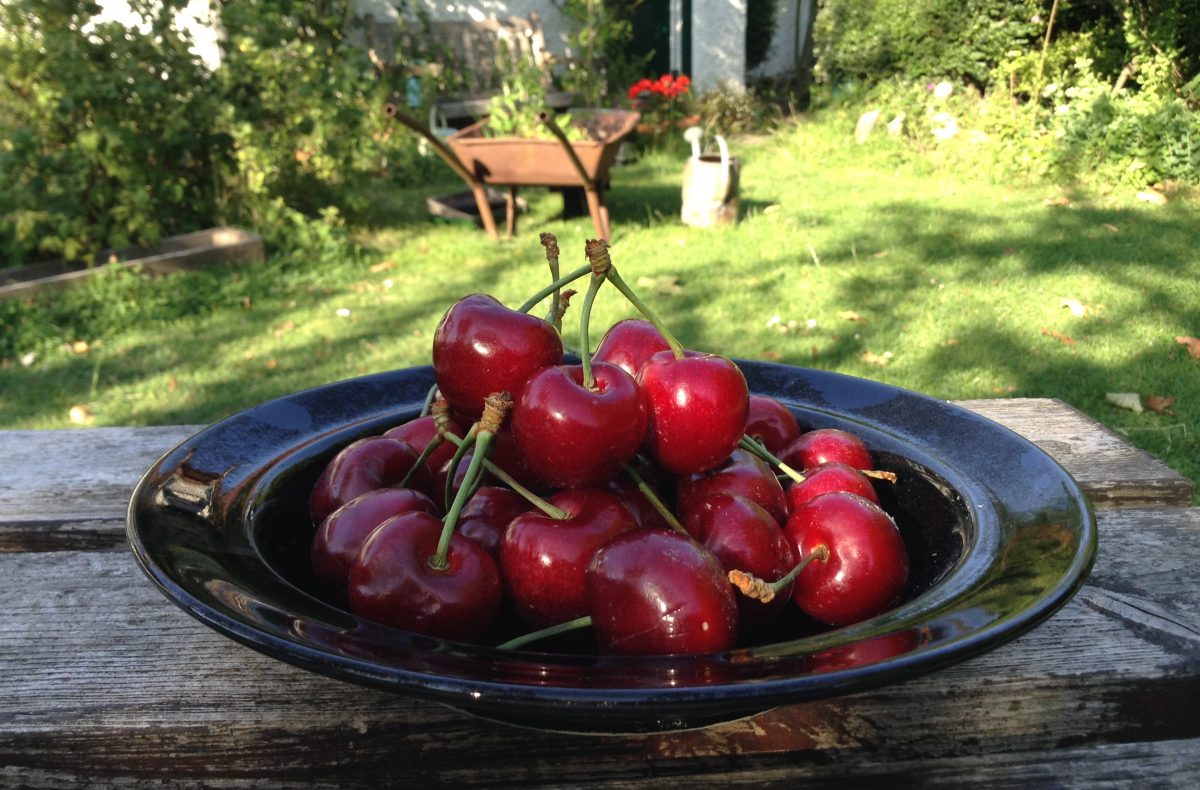
Over the last fifteen years or so, my husband and I have acquired more tea sets than we can reasonably use (or house). We didn’t set out to collect them and if pressed, we would not call ourselves “collectors”. “Rescuers” feels like a better description, especially in the face of the appalling “smash the crockery” stalls from which we frequently run in horror at garden fetes. A tea set has the same resonance as a family photo album, something that might have been a wedding present, perhaps saved for “best” instead of being used every day. Once we happen across a tea set that calls to us from the jumble of a second-hand shop, we no longer have a choice. We hold our breath as each piece is wrapped, then carry our new treasure home, where it must fight for space on our already-crowded shelves.
One of our favourites is an angular green and white Palissy tea set, painted with gold stars. My husband found most of it – a large tea pot, sugar bowl, cups and saucers and tea plates – in a charity shop on Leyton High Road, near where we used to live. The milk jug was missing, presumably broken by a previous owner, so my husband started looking for one online. During the search, he acquired a matching but smaller tea pot, another sugar bowl and, eventually, the elusive milk jug. Buying china online is a risky business. Someone posted a sugar bowl and milk jug to us with no more protection than a jiffy bag. The sugar bowl survived but the jug arrived in pieces. It wasn’t the one we wanted to complete our favourite tea set but the seller’s lack of care was still upsetting.




Palissy china in this style was made by AE Jones Ltd in Longford, Stoke-on-Trent during the 1930s and early 1940s. The Palissy name was bought by The Royal Worcester Porcelain Company in 1958, later passed to Spode after a merger in 1976 and was sold to Aynsley China Ltd, also of Longford, in 1989, when the Palissy Works were demolished. The mark on the underside of our tea set seems to date it to the years between 1935 and 1939.

Which brings me to VE Day. We wanted to remember and mark this significant event in our collective past but felt a bit queasy about any sentimental “flag-waving”. Our solution was to focus on the personal – things we now have and cherish that other people owned 75 years ago. My husband carried a wind-up gramophone into the garden and provided a soundtrack to the day with a fabulous collection of 78s. Our playlist included Glen Miller, George Formby, Flanagan and Allen and even (to my great surprise) the band of the Coldstream Guards playing the National Anthem – a rare engagement by my husband with that particular piece of music. We enjoyed afternoon tea from the Palissy tea set, thinking of our families’ war time experiences and wondering who had eaten from those plates and drunk from those cups to celebrate the end of the war in 1945.





I love the art deco style and shape of this tea set which sets it so firmly in the 1930s. It is so touching to read about your tribute to Victory in Europe day. How wonderful to have an old wind up gramophone that plays, and to remember past generations who enjoyed listening to it. I have long been fascinated by my late father’s university days in the 1930s when record parties were definitely in vogue!
LikeLike
I will be keeping my eyes open for this tea set in the charity shop where I work from now on. What a lovely way to celebrate VE Day and such a great excuse to bring out the gramophone. Very authentic of you!
LikeLike